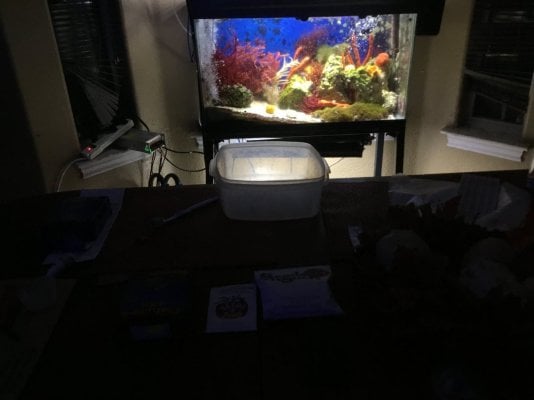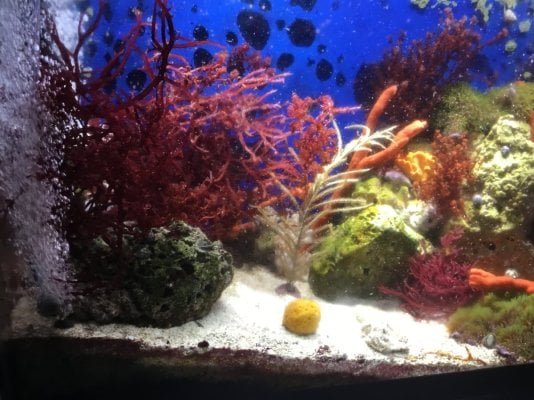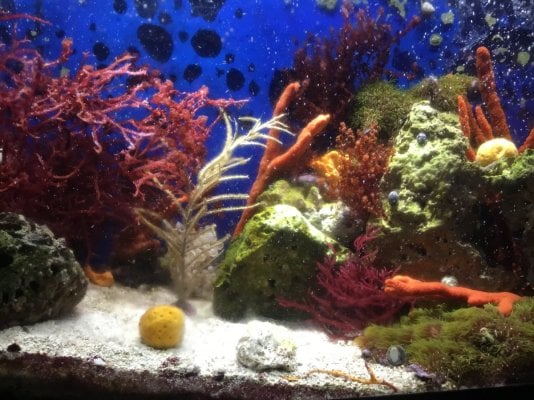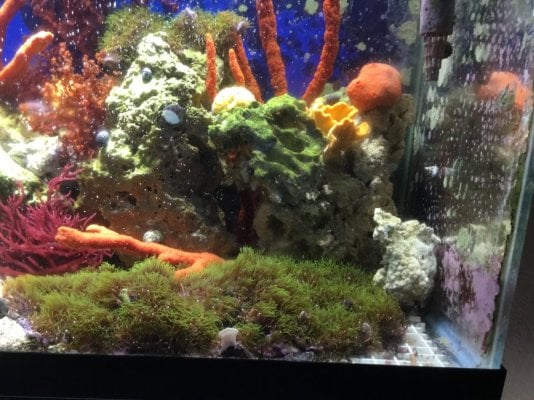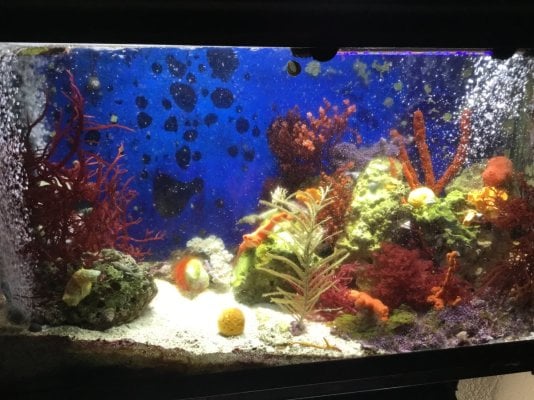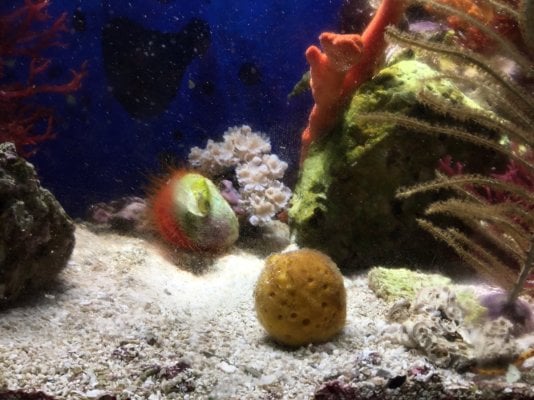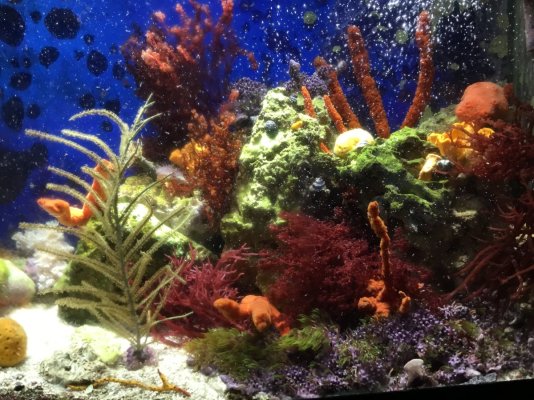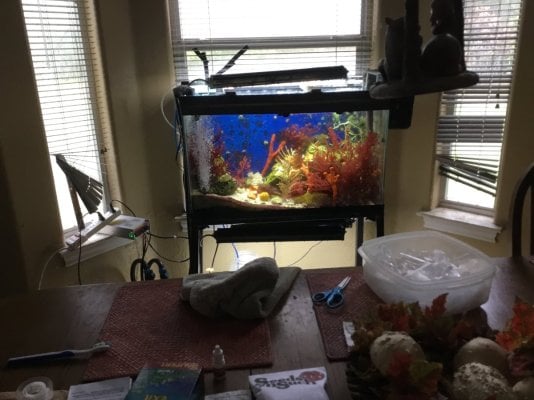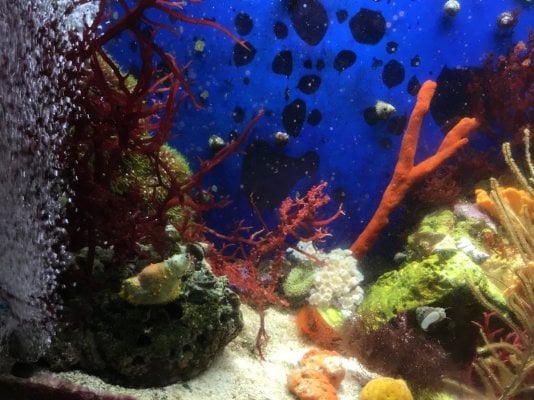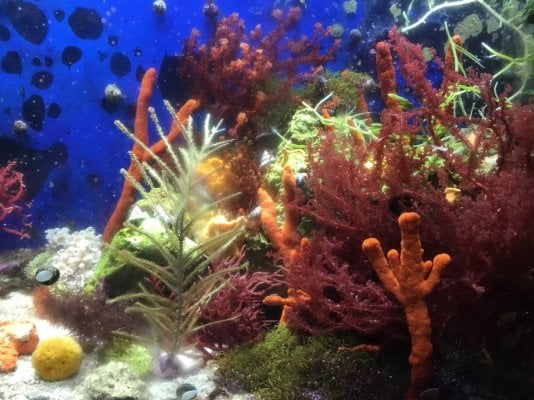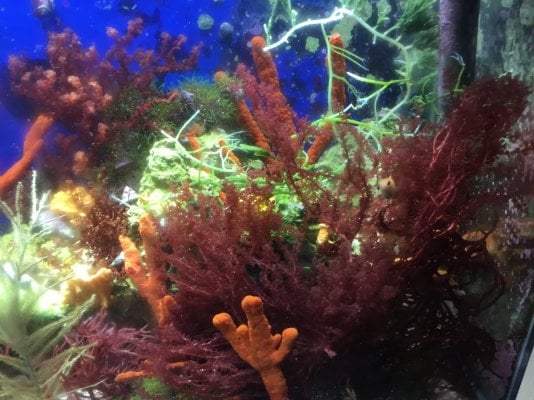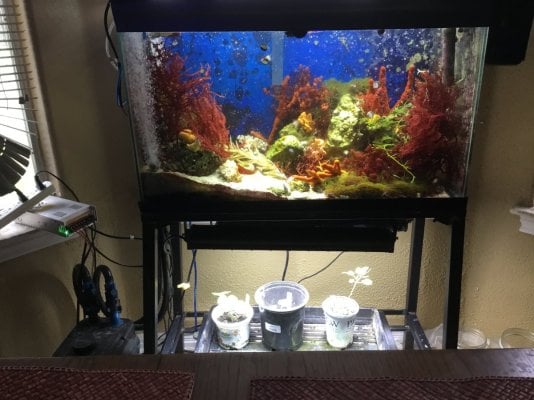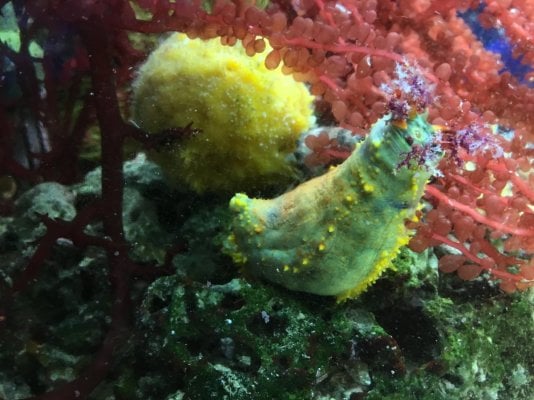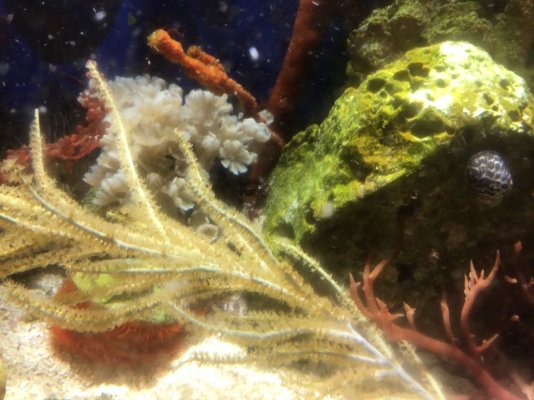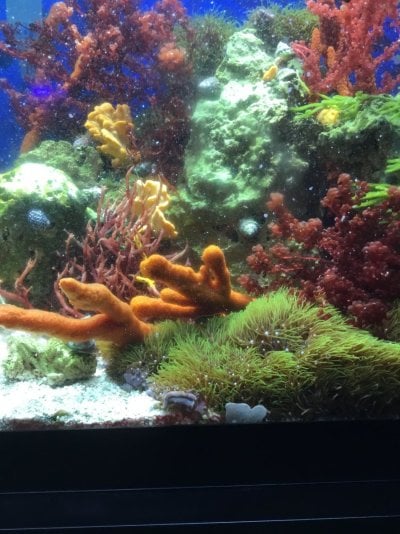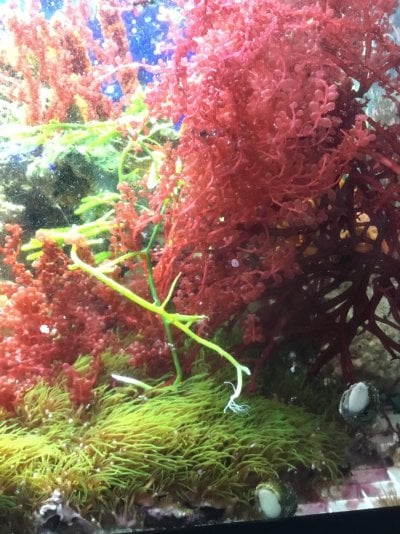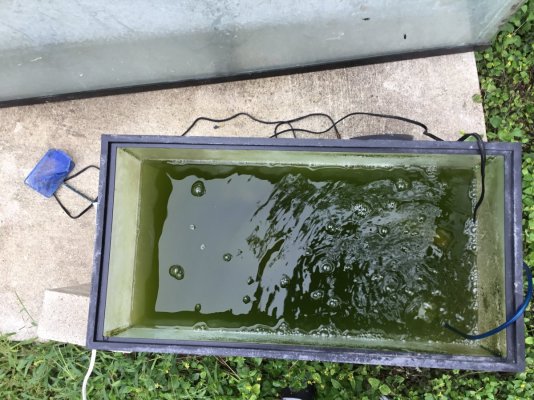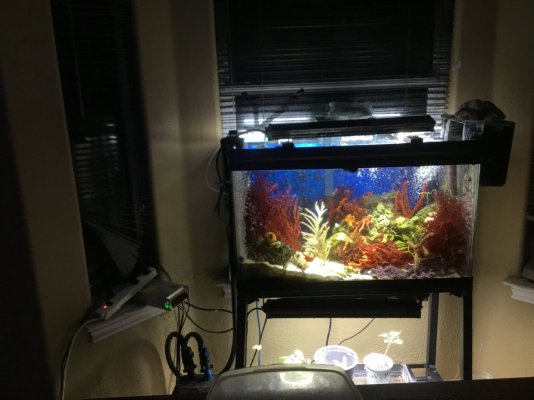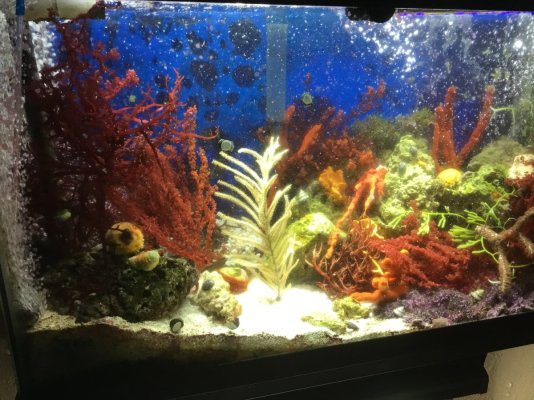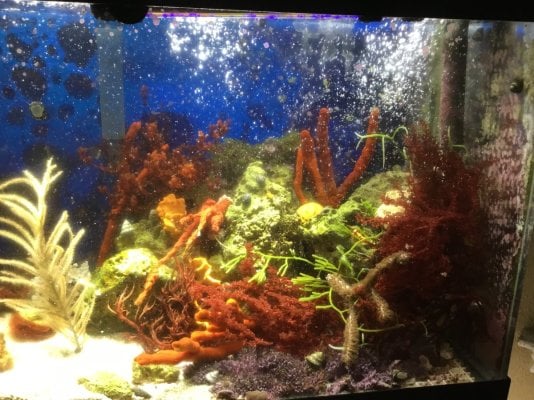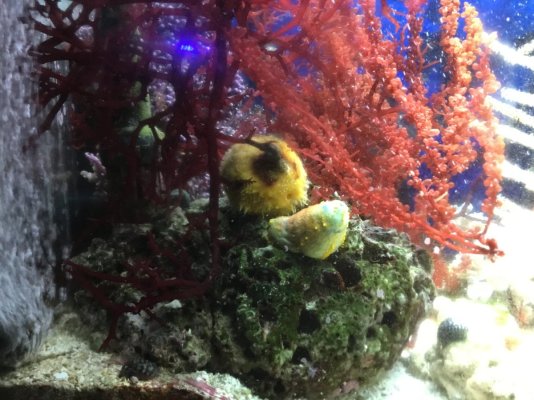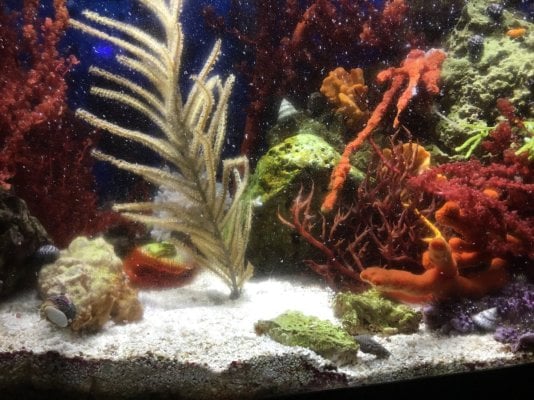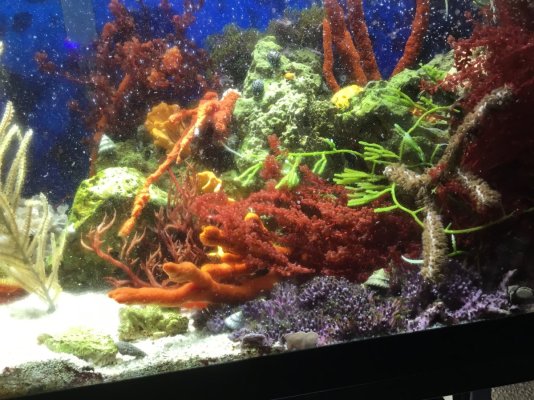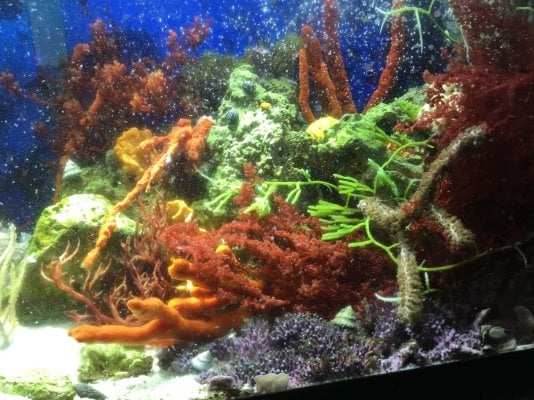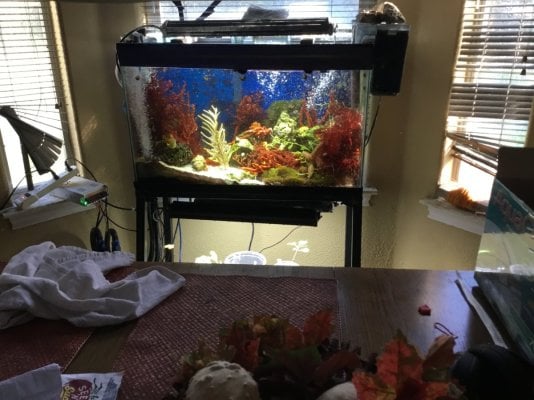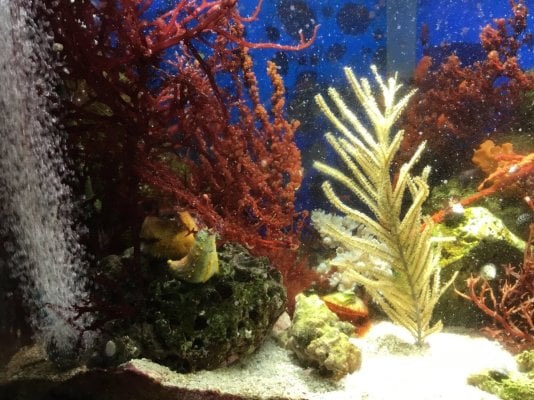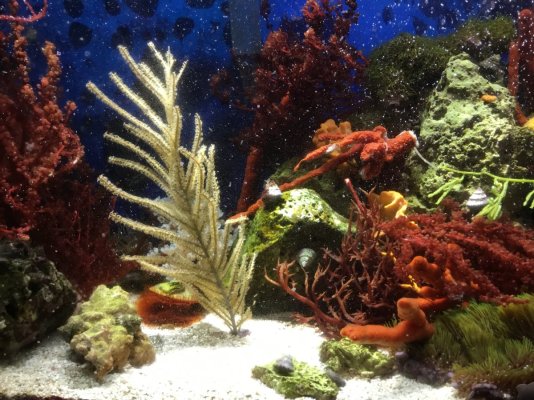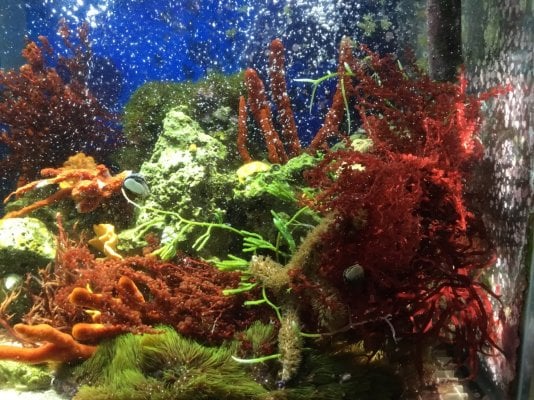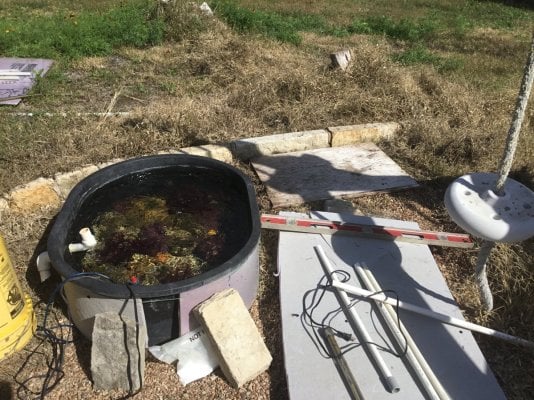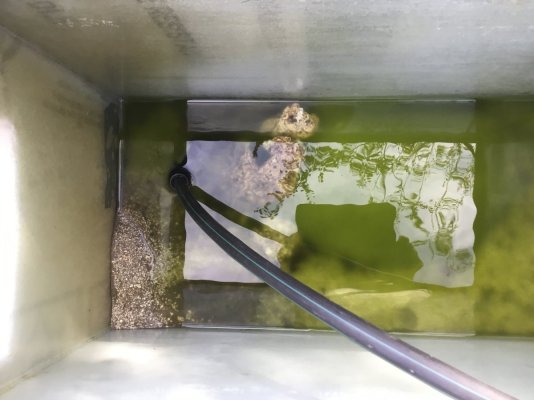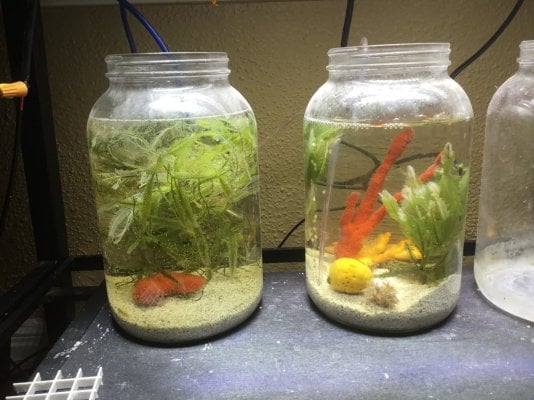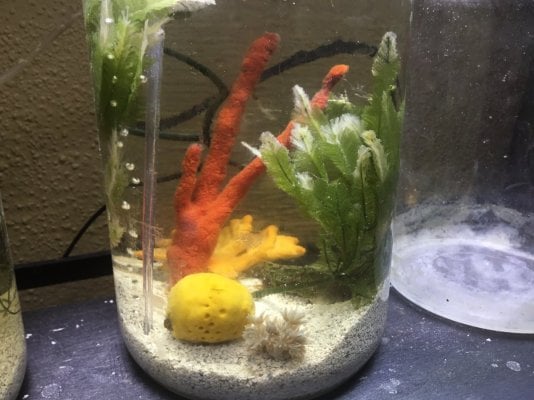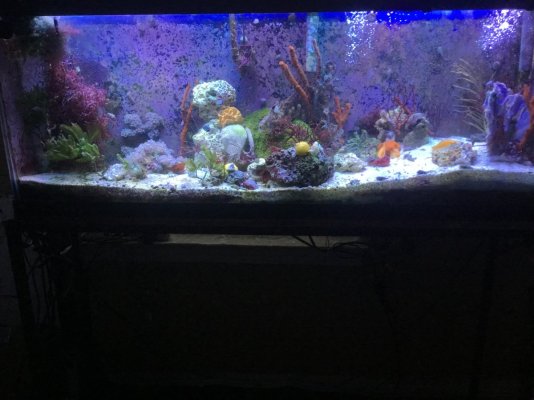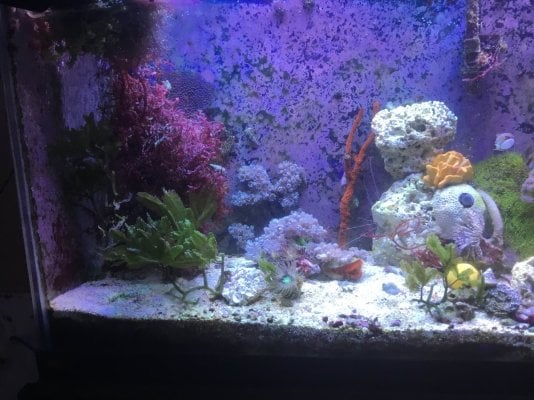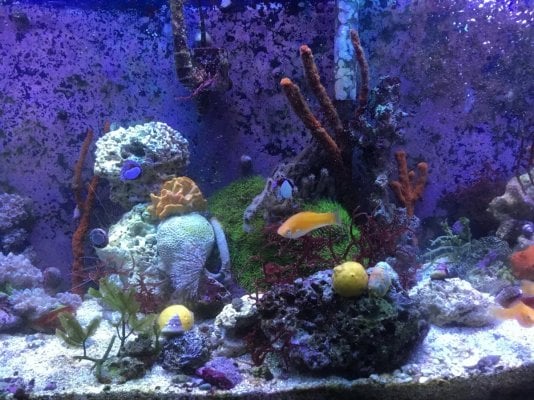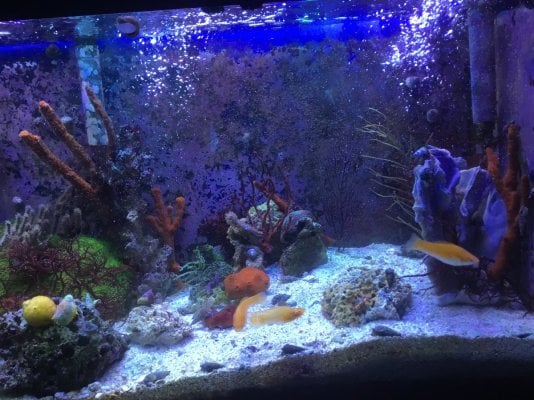Having started Reefing in September 1971 with a Galveston Bay biotheme: Curly Que Anemonea & Peppermint Shrimp came from jetties and Green Mollies & Grass Shrimp came from salt water marshes. Fast forward 50 years:
Because I never left soft corals for SPS, my interest moved on to ornamental seaweeds with mixed invertebrates: feather dusters, flame scallops & sea apples. In the last two years both ornamental and utilitarian cryptic sponges have captivated my attention. @Timfish hooked me on the merits of cryptic sponges with recycling DOC into the microbial food web. However, availability of Gulf of Mexico ornamental sponges has treble hooked me. As I got into it, I read that sponges needed silicates, so I bought a test kit and immediately realized that my systems were loaded with silicates. After further investigation, my makeup water comes from 1000’ deep in Edwards Aquifier and is saturated with silicates, TDS is 990 ppm.
Recently while researching a thread on pathogens to fish, I came across what do sponges on the reef eat. Amongst other things, sponges eat free swimming parasites which include ich. So, instead of a UV sterilizer, sponges are ich vacuum cleaners.
Smallest and newest tank: 30G at 2 years
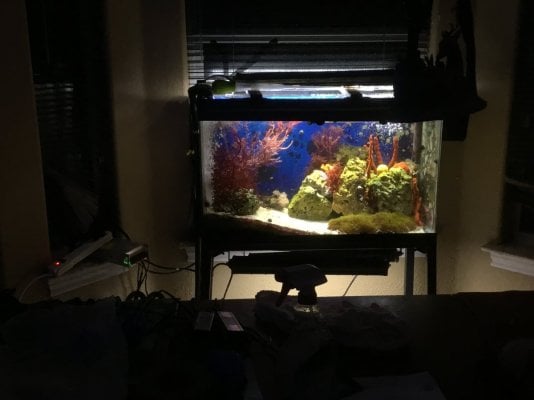
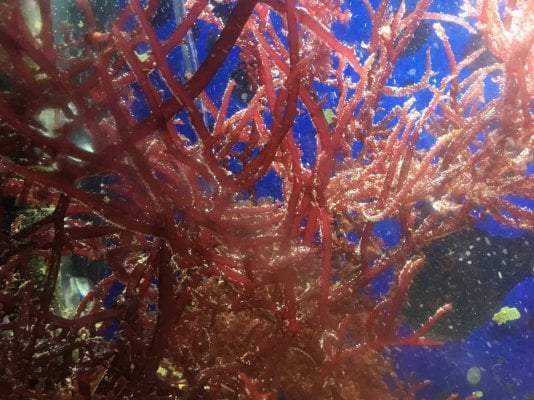
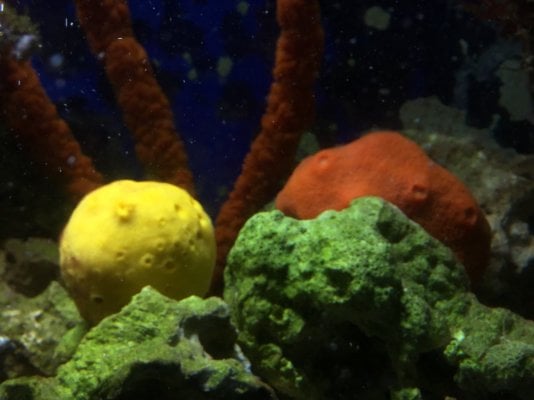
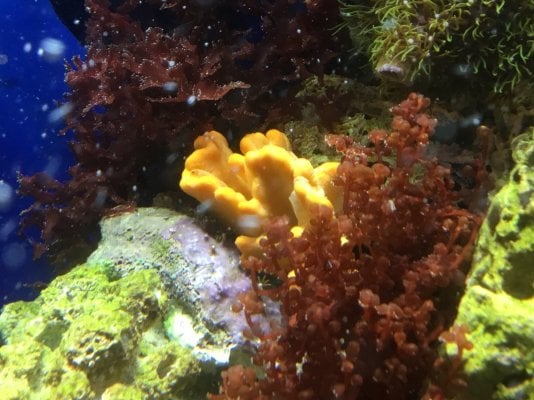
Because I never left soft corals for SPS, my interest moved on to ornamental seaweeds with mixed invertebrates: feather dusters, flame scallops & sea apples. In the last two years both ornamental and utilitarian cryptic sponges have captivated my attention. @Timfish hooked me on the merits of cryptic sponges with recycling DOC into the microbial food web. However, availability of Gulf of Mexico ornamental sponges has treble hooked me. As I got into it, I read that sponges needed silicates, so I bought a test kit and immediately realized that my systems were loaded with silicates. After further investigation, my makeup water comes from 1000’ deep in Edwards Aquifier and is saturated with silicates, TDS is 990 ppm.
Recently while researching a thread on pathogens to fish, I came across what do sponges on the reef eat. Amongst other things, sponges eat free swimming parasites which include ich. So, instead of a UV sterilizer, sponges are ich vacuum cleaners.
Smallest and newest tank: 30G at 2 years













